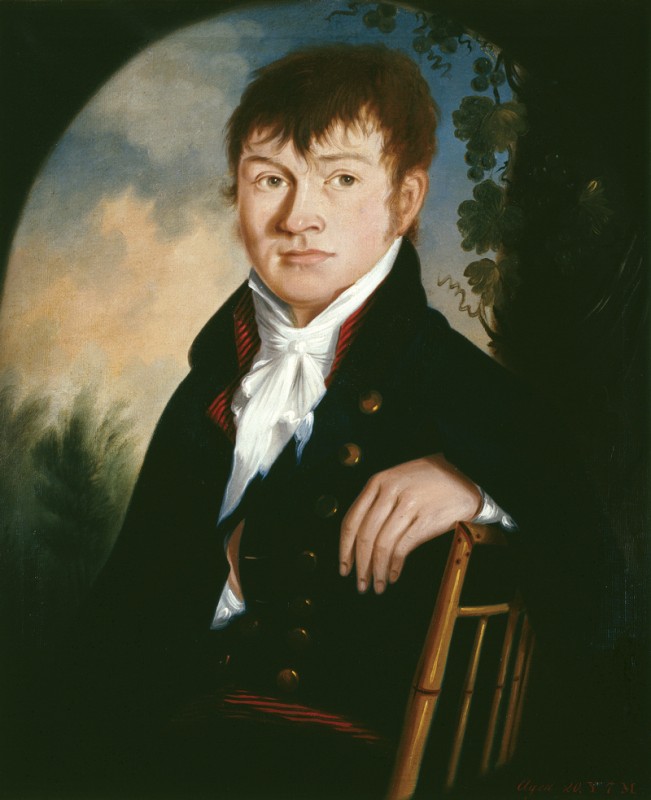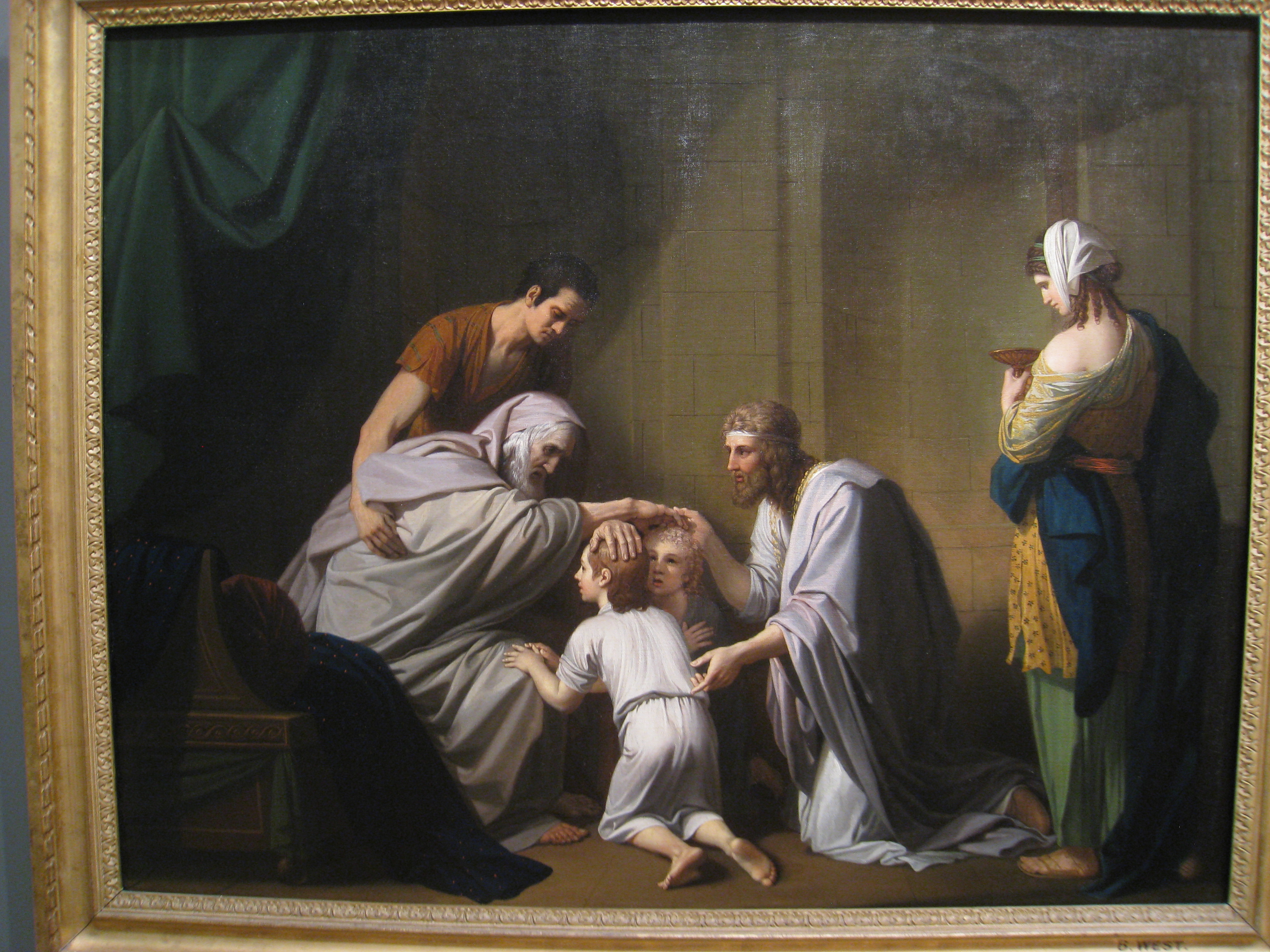|
Aaron Willard
Aaron Willard (October 14, 1757 – May 20, 1844) was an entrepreneur, an industrialist, and a designer of clocks who worked extensively at his Roxbury, Massachusetts, factory during the early years of the United States of America. While at the family farm at Grafton, Aaron Willard developed his career conjointly with his three brothers, who became celebrated horologists too (though Aaron's and his brother Simon's creations are the most significant). Both brothers moved to Roxbury, Boston, Massachusetts, (where the peninsular town of Boston joined to the mainland) where they developed one of the first modern American industries, independently from each other. Simon and Aaron Willard's clocks were the first economically accessible timepieces of the country. Willard Family The first American ancestor of Willard's family was Simon Willard who arrived in 1634, together with his wife Mary Sharpe, stemming from Horsmonden, Kent, England. In America, Simon Willard became a milita ... [...More Info...] [...Related Items...] OR: [Wikipedia] [Google] [Baidu] |
Aaron Willard
Aaron Willard (October 14, 1757 – May 20, 1844) was an entrepreneur, an industrialist, and a designer of clocks who worked extensively at his Roxbury, Massachusetts, factory during the early years of the United States of America. While at the family farm at Grafton, Aaron Willard developed his career conjointly with his three brothers, who became celebrated horologists too (though Aaron's and his brother Simon's creations are the most significant). Both brothers moved to Roxbury, Boston, Massachusetts, (where the peninsular town of Boston joined to the mainland) where they developed one of the first modern American industries, independently from each other. Simon and Aaron Willard's clocks were the first economically accessible timepieces of the country. Willard Family The first American ancestor of Willard's family was Simon Willard who arrived in 1634, together with his wife Mary Sharpe, stemming from Horsmonden, Kent, England. In America, Simon Willard became a milita ... [...More Info...] [...Related Items...] OR: [Wikipedia] [Google] [Baidu] |
Grafton, Massachusetts
Grafton is a town in Worcester County, Massachusetts, United States. The population was 19,664 at the 2020 census. The town consists of the North Grafton, Grafton, and South Grafton geographic areas, each with a separate ZIP Code. Incorporated in 1735, the town is home to a Nipmuc village known as '' Hassanamisco'' Reservation, the Willard House and Clock Museum, Community Harvest Project, and the Tufts University Cummings School of Veterinary Medicine. Grafton operates the state's largest on-call fire department, with 74 members. History Bands of the Nipmuc tribe are the indigenous inhabitants, and maintain a state-recognized reservation known as Hassanamesit, or Hassanamisco, which was formerly a Praying Indian village from 1647 when the Reverend John Eliot came and converted the Hassanamiscos to Christianity . in 1727 the Hassanamesit reservation of 8,000 acres was divided into 7,500 acres to 40 English proprietors and 500 acres to 7 Nipmuc proprietors. This became Grafton, ... [...More Info...] [...Related Items...] OR: [Wikipedia] [Google] [Baidu] |
Ephraim Willard
Ephraim (; he, ''ʾEp̄rayīm'', in pausa: ''ʾEp̄rāyīm'') was, according to the Book of Genesis, the second son of Joseph ben Jacob and Asenath. Asenath was an Ancient Egyptian woman whom Pharaoh gave to Joseph as wife, and the daughter of Potipherah, a priest of ʾĀwen. Ephraim was born in Egypt before the arrival of the Israelites from Canaan. The Book of Numbers lists three sons of Ephraim: Shuthelah, Beker, and Tahan. However, 1 Chronicles 7 lists eight sons, including Ezer and Elead, who were killed in an attempt to steal cattle from the locals. After their deaths he had another son, Beriah. He was the ancestor of Joshua, son of Nun ben Elishama, the leader of the Israelite tribes in the conquest of Canaan. According to the biblical narrative, Jeroboam, who became the first king of the Northern Kingdom of Israel, was also from the house of Ephraim. Biblical criticism The Book of Genesis related the name "Ephraim" to the Hebrew root פָּרָה (pārā), ... [...More Info...] [...Related Items...] OR: [Wikipedia] [Google] [Baidu] |
Boston Directory
''The Boston Directory'' of Boston, Massachusetts, was first published in 1789. It contained "a list of the merchants, mechanics, traders, and others, of the town of Boston; in order to enable strangers to find the residence of any person." Also included were listings for public officials, doctors, bank directors, and firemen. The directory was issued annually after 1825; previously it had appeared irregularly. The number of listings in each directory reflected fluctuations in the population size of Boston. In 1789, the directory included some 1,474 listings; by 1875, there were 126,769.Advertisement for Boston Directory. Boston Almanac, 1875. Publishers included John Norman (1789); John West (1796-1803); Edward Cotton (1805-1818); Charles Stimpson (1820-1846); George Adams (1846-1857); Adams, Sampson & Co. (1858-1865); Sampson, Davenport & Co. (1865-1884); Sampson, Murdock & Co. (1885-1903); Sampson & Murdock Co. (1904-ca.1930); R.L. Polk & Co. (1944-ca.1980). Boston Director ... [...More Info...] [...Related Items...] OR: [Wikipedia] [Google] [Baidu] |
Joseph Willard
Joseph Willard (December 29, 1738 – September 25, 1804) was an American Congregational clergyman and academic. He was president of Harvard from 1781 until 1804. Biography Joseph Willard was born December 29, 1738, in Biddeford, York County (at that time part of the Province of Massachusetts Bay, but subsequently the state of Maine) into one of the most illustrious families in Colonial Massachusetts. His parents were Reverend Samuel Willard (1705-1741) and Abigail Willard (''née'' Sherman). One of his great-grandfathers was another Reverend Samuel Willard, and his great-great-grandfather was Major Simon Willard. Joseph's father died when he was two years old and one year later his mother remarried to a Rev. Richard Elvins. Joseph was educated at the Dummer Academy (now known as The Governor's Academy). Through the generosity of friends he entered Harvard College, where he received a B.A. in 1765, and an M.A. in 1768. He was a tutor at Harvard until 1772, when he began ... [...More Info...] [...Related Items...] OR: [Wikipedia] [Google] [Baidu] |
Banjo Clock
The banjo clock, or banjo timepiece, is an American wall clock with a banjo-shaped case. It was invented by Simon Willard, originally of Grafton, Massachusetts, later of Roxbury, Massachusetts, and patented in 1802. The banjo clock normally lacks a striking mechanism and indicates time only by its hands and dial, for which reason some horologists may insist upon calling it a timepiece rather than a true clock. In popular usage though, no such distinction is made. The banjo style of wooden case usually features a round opening for a painted dial, a long-waisted throat, and a rectangular pendulum box with hinged door. Both the throat and door are ornamented with reverse-painted ('' verre églomisé'') glass panels, and the case is usually flanked by curved and pierced brass frets. A finial mounted atop the case usually takes the form of a cast-brass eagle Eagle is the common name for many large birds of prey of the family Accipitridae. Eagles belong to several groups of ge ... [...More Info...] [...Related Items...] OR: [Wikipedia] [Google] [Baidu] |
Napoleonic Wars
The Napoleonic Wars (1803–1815) were a series of major global conflicts pitting the French Empire and its allies, led by Napoleon I, against a fluctuating array of European states formed into various coalitions. It produced a period of French domination over most of continental Europe. The wars stemmed from the unresolved disputes associated with the French Revolution and the French Revolutionary Wars consisting of the War of the First Coalition (1792–1797) and the War of the Second Coalition (1798–1802). The Napoleonic Wars are often described as five conflicts, each termed after the coalition that fought Napoleon: the Third Coalition (1803–1806), the Fourth (1806–1807), the Fifth (1809), the Sixth (1813–1814), and the Seventh (1815) plus the Peninsular War (1807–1814) and the French invasion of Russia (1812). Napoleon, upon ascending to First Consul of France in 1799, had inherited a republic in chaos; he subsequently created a state with stable financ ... [...More Info...] [...Related Items...] OR: [Wikipedia] [Google] [Baidu] |
Iron
Iron () is a chemical element with symbol Fe (from la, ferrum) and atomic number 26. It is a metal that belongs to the first transition series and group 8 of the periodic table. It is, by mass, the most common element on Earth, right in front of oxygen (32.1% and 30.1%, respectively), forming much of Earth's outer and inner core. It is the fourth most common element in the Earth's crust. In its metallic state, iron is rare in the Earth's crust, limited mainly to deposition by meteorites. Iron ores, by contrast, are among the most abundant in the Earth's crust, although extracting usable metal from them requires kilns or furnaces capable of reaching or higher, about higher than that required to smelt copper. Humans started to master that process in Eurasia during the 2nd millennium BCE and the use of iron tools and weapons began to displace copper alloys, in some regions, only around 1200 BCE. That event is considered the transition from the Bronze Age to the Iron A ... [...More Info...] [...Related Items...] OR: [Wikipedia] [Google] [Baidu] |
Longcase Clock
A grandfather clock (also a longcase clock, tall-case clock, grandfather's clock, or floor clock) is a tall, freestanding, weight-driven pendulum clock with the pendulum held inside the tower or waist of the case. Clocks of this style are commonly 1.8–2.4 metres (6–8 feet) tall with an enclosed pendulum and weights suspended by either cables or chains which have to be calibrated occasionally to keep the proper time. The case often features elaborately carved ornamentation on the hood (or bonnet), which surrounds and frames the dial, or clock face. The English clockmaker William Clement is credited with the development of this form in 1670. Until the early 20th century, pendulum clocks were the world's most accurate timekeeping technology, and longcase clocks, due to their superior accuracy, served as time standards for households and businesses. Today they are kept mainly for their decorative and antique value, having been widely replaced by both analog and digital ti ... [...More Info...] [...Related Items...] OR: [Wikipedia] [Google] [Baidu] |
Bourgeoisie
The bourgeoisie ( , ) is a social class, equivalent to the middle or upper middle class. They are distinguished from, and traditionally contrasted with, the proletariat by their affluence, and their great cultural and financial capital. They are sometimes divided into a petty (), middle (), large (), upper (), and ancient () bourgeoisie and collectively designated as "the bourgeoisie". The bourgeoisie in its original sense is intimately linked to the existence of cities, recognized as such by their urban charters (e.g., municipal charters, town privileges, German town law), so there was no bourgeoisie apart from the citizenry of the cities. Rural peasants came under a different legal system. In Marxist philosophy, the bourgeoisie is the social class that came to own the means of production during modern industrialization and whose societal concerns are the value of property and the preservation of capital to ensure the perpetuation of their economic supremacy in society. ... [...More Info...] [...Related Items...] OR: [Wikipedia] [Google] [Baidu] |
Office
An office is a space where an Organization, organization's employees perform Business administration, administrative Work (human activity), work in order to support and realize objects and Goals, plans, action theory, goals of the organization. The word "office" may also denote a position within an organization with specific duties attached to it (see officer (other), officer, office-holder (other), office-holder, official); the latter is in fact an earlier usage, office as place originally referring to the location of one's duty. When used as an adjective, the term "office" may refer to business-related tasks. In legal, law, a company or organization has offices in any place where it has an official presence, even if that presence consists of (for example) a storage silo rather than an establishment with desk-and-office chair, chair. An office is also an architectural and design phenomenon: ranging from a small office such as a Bench (furniture), bench in th ... [...More Info...] [...Related Items...] OR: [Wikipedia] [Google] [Baidu] |




